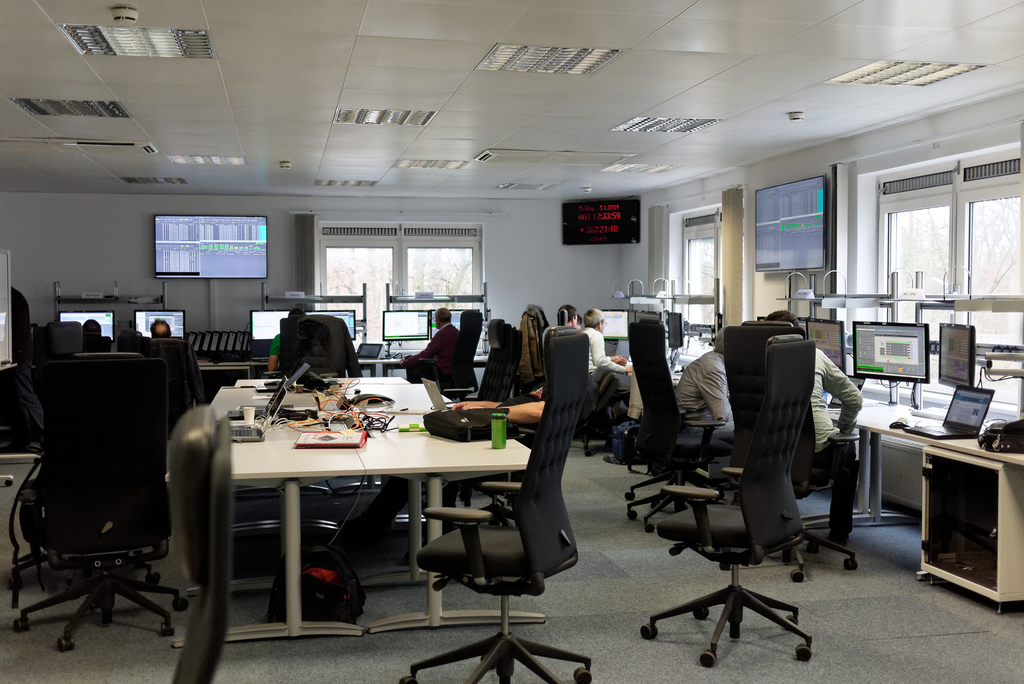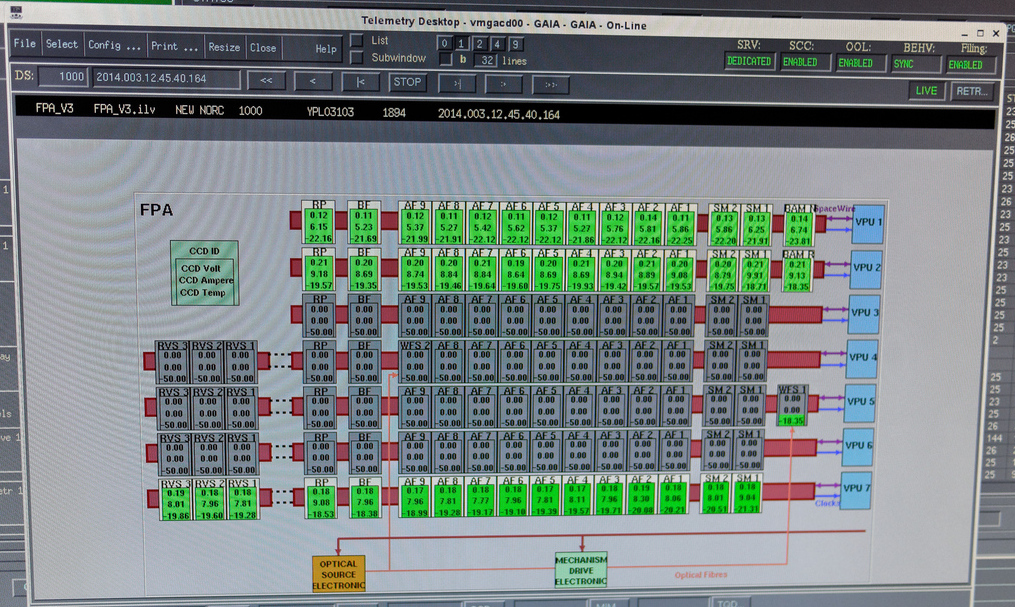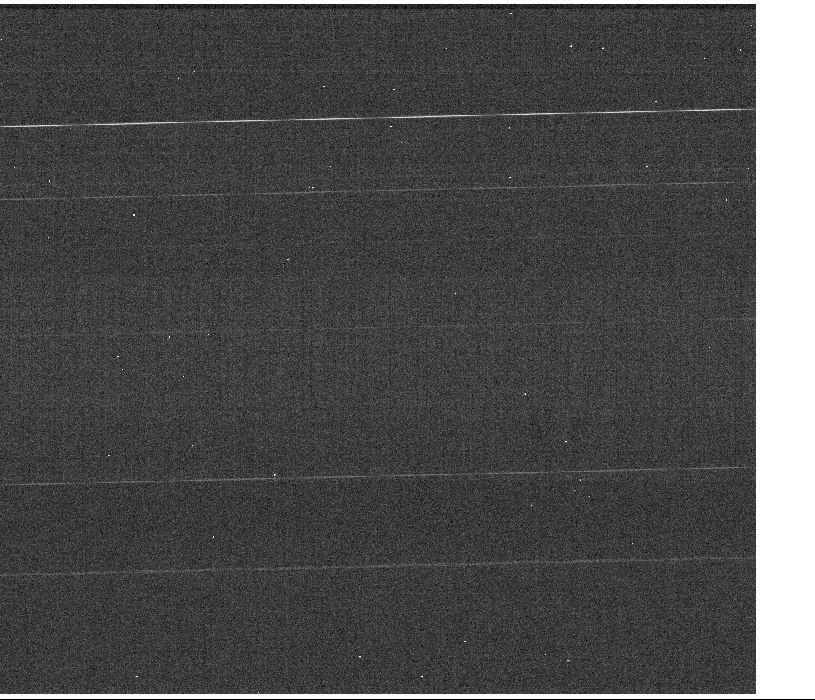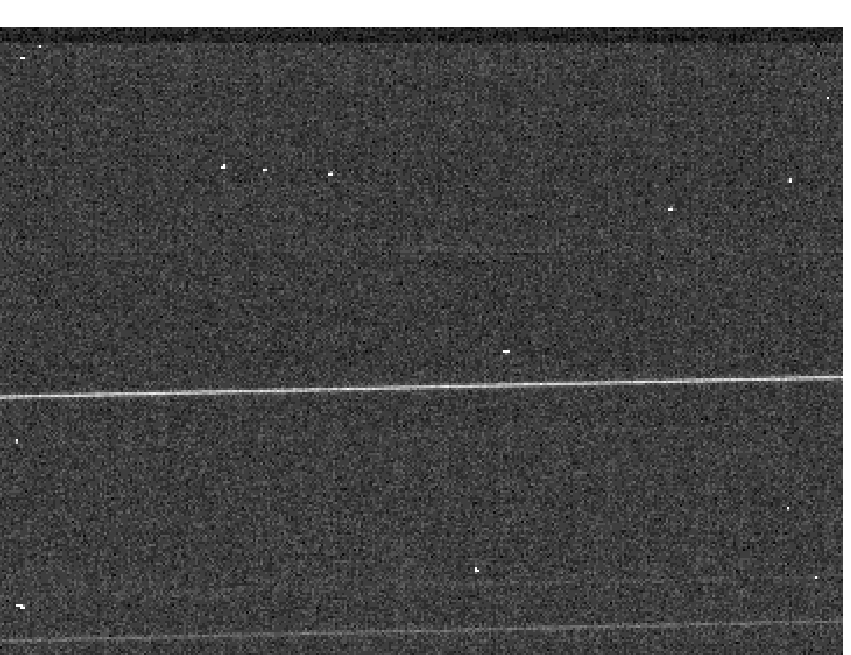20140106 Gaia focal plane switches on - Gaia
Gaia focal plane switch on |
| On Friday, 3 January 2014 many of us in the Gaia team converged on the science support room in the Mission Operations Centre in ESOC. You can see a photo in the @ESAGaia tweet from the project scientist. |
 |
|
The project scientist, project manager as well as representatives from Astrium, ESA project, MOC and SOC were all present for the momentous occasion and to observe carefully the switch on procedure. The day started with a 10:30 planning and 11:00 am briefing to make sure everyone was on the same page. First contact for the day via New Norcia was at 11:30 UTC. Switching on a billion pixel camera is not a simple matter of hitting a button or flicking a switch. First in the preceding days some parameters need to be set up taking about 20,000 telecommands. Then a complex set of hundreds of telecommands must be sent to switch on each part of the camera. First the Video Processing Units (VPU) were all commanded on. While your digital camera has a chip in it which does quite a bit of image processing on the camera Gaia has seven VPUs which make the camera work. As each VPUs is turned on, the measurement devices associated with its CCDs come on and we start to get temperature and current rates from the focal plane. The photo below shows the screen with VPU 1,2 and 7 on with information about each of their corresponding CCD rows arranged like the focal plane of Gaia, this 'mimic' display is part of the control system in MOC. |
 |
|
When all VPUs are on then the Proximity Electronics Modules (PEM) are switched on - after that the camera is actually 'on'. All of these activities require a lot of preparation and each step is carefully checked so the entire process takes about 4 or 5 hours so by 15:41 UTC everything was on and looking nominal. In nominal operations Gaia will spin and the VPUs will detect stars and read out parts of the CCDs in Time Delayed Integration (TDI) mode. The TDI step matches the rotation of the satellite thus tracking the star across the focal plane. At this point in time Gaia is NOT spinning as it goes to L2 (at about 3 am on January 3 Gaia just traveled its millionth kilometre from Earth). Getting the spin synchronized with the camera and checking that the tracking and readout works correctly is a task for another day - January 3 was just about switching it all on. The first device on board to actually generate images is the Basic Angle Monitor (BAM). In nominal mode a laser beam is split and directed down the two optical paths to produce an artificial star (interference pattern) on the BAM dedicated CCD allowing us to detect and characterize any variation in the angle between the two telescopes. On Friday the laser was not on so the BAM has actually taken a dark picture. In such a strip we might hope to see out-of-focus star traces and cosmic rays (high energy particles; they appear like an irregular pattern of very high signal pixels). The image (reconstructed by Alcione Mora) below indeed shows both of these effects and is the first optical image to come from Gaia. |
 |
| The BAM laser was switched on the day after (5 January). It produces an artificial star (BAM pattern) per telescope using the principle of light interference. The BAM is composed of two optical benches including many mirrors, filters, beam splitters and a light fiber carrying the laser light. Each BAM pattern has a periodic (sinusoidal) shape extended over a large portion of the CCD. This is required to provide high precision measurement. The stars generated are static, as compared to those in the sky, which move through the focal plane due to the spacecraft's slow scan rotation motion. The shifts in the BAM patters can thus be related to changes in the Gaia line of sight with an unprecedented precision. Displacements smaller than 0.00001 pixel will be routinely measured in regular operations. The image below shows the fringes and reconstructed profile - we expect to see a lot of change as Gaia cools. |
 |
| Though not operating in nominal mode the VPU can be used to get an image from the focal plane - this is like memory dump of the CCD - not the way we will do it in operations but very interesting in commissioning. In such a dump we would again expect to see star trails, since we read out TDI but are not rotating, and cosmics which is what we see in the image for Row 4 Star Mapper 2 reconstructed by Cian Crowley below. The first image from the focal plane proper. The data was taken on January 3 but not downlinked until the next pass on January 4. Here pre-flight knowledge has been used to remove some of the CCD effects. Star trails and cosmics are clearly visible. |
 |
| Zooming in we can see more of the background - at the top of the zoom image below you may see dark pixels which are prescan samples not exposed to the sky. |
 |
| Gaia will be placed in a Lissajous orbit around L2, the second Lagrangian point of the Sun-Earth system. This location will provide the very high thermal stability required to fulfill the mission goals. However, it cannot benefit from the protection the Earth atmosphere grants us. High energy particles coming from the Sun (solar wind) and other astronomical sources (cosmic rays) will subject the spacecraft to a harsh radiation environment. CCD detectors like the ones onboard Gaia are sensitive to those particles, and their performance will degrade with time. In fact, Gaia can be considered the most detailed radiation monitor ever flown to space. An example of a high energy particle hit leaving a particularly large footprint can be seen below. It was captured by chance in one of the wavefront sensor CCDs, which are instructed to record a particular kind of image when very bright stars (G < 6-7) cross the focal plane. Regular smaller size cosmic ray hits are also visible in the image. |
 |
| For the general public these images will appear perhaps very uninteresting but for the Gaia community they represent the first step in verifying that Gaia works as intended. It was a spectacular day again showing the Gaia project spirit with all parties, ESA Project, MOC, SOC, DPAC and Astrium working well together. |
|
William O'Mullane (Gaia Science Operations Manager) |
- Removed a total of (1) border attribute.
- Removed a total of (1) cellpadding attribute.
- Removed a total of (1) cellspacing attribute.








































 Sign in
Sign in
 Science & Technology
Science & Technology